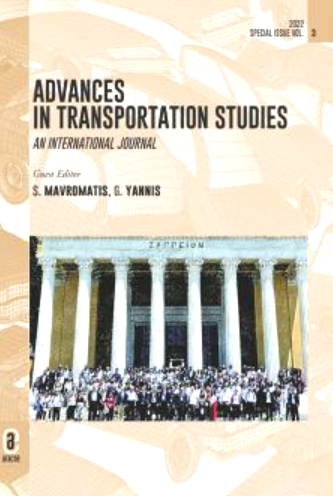
More and more people walking along the sidewalk or even crossing the street are using their mobile phones. This study aims to investigate how hand-held cell phone conversation affects the behavior of pedestrians at signalized intersections in terms of both safety and traffic. In order to compare the behavior of distracted and non-distracted pedestrians, an outdoor environment experiment was carried out in real road conditions. Specifically, video recordings from three signalized intersections in the capital of Greece, Athens, were analysed. Various demographic and behavioral characteristics were recorded, including mobile phone use. Initially, multiple linear regression models were developed in order to identify how cell phone use affects pedestrians’ speed. Then, binary logistic regression models were developed to ascertain the association between the safety characteristics of pedestrians, in terms of near misses, and distraction due to cell phone use. Among 2,280 pedestrians, it was observed that almost one-fifth of them (16.6%) engaged in a mobile-phone distracting activity. The respective percentage for hand-held cell phone conversation was equal to 5%. The results of the developed statistical models showed that pedestrians’ main traffic and safety characteristics were negatively impacted by distraction from hand-held cell phone conversation, as mobile phone use not only reduces pedestrians’ speed but also increases the likelihood that they will be involved in a collision with an approaching vehicle. Lastly, various recommendations for tackling this issue are provided.
| ID | pj225 |
| DOI | |
| Tags |







